
Welcome to The Regenerators.
Introduction
Whether you are in the busy city or the open countryside, living things are all around us.
By knowing where to look, and what to look out for, you can discover the living things that rely on your garden, park or school to survive.
Let's go to the woods!
Join Ethan and Cece as they meet wildlife and nature expert, Chantelle, and explore the living things in the woods around them.
(UPBEAT MUSIC)
Ethan: I am Ethan.
Cece: And I am Cece. We are super excited to meet wildlife and nature expert, Chantelle.
Chantelle: Hi Change Champs. I'm so excited to be here. One of my favourite things in the whole world is exploring places and this woodland looks so exciting.
When I'm out exploring I love looking out for living things. And if you look carefully, you can find life almost anywhere. The place where an organism lives is called it's habitat. So this is a woodland habitat. Now what creatures might we find in woodland habitat?
Cece: Squirrel.
Ethan: A spider.
Cece: Bird.
Ethan: Mouse.
Cece: Worm.
Ethan: Butterfly.
Cece: Slug.
Chantelle: Wow. What a list. And I bet you can't wait to find all the creatures that live here, but for now I have a mission.
Cece: Your mission is to find as many animals and bugs as you can and make a record of them.
Chantelle: Okay Team, what might we need to go on a bug hunt?
Cece: A bug jar.
Ethan: A magnifying glass.
Chantelle: And some pencils. Okay, let's gather up our things and go.
(UPBEAT MUSIC)
Ethan: Oh, I found some birds.
Cece: Oh look, some snails.
Ethan: I found a beetle. Oh, look at my beetles.
Chantelle: Kids. We've found so many different types of living things. We need to use a tally chart to record our findings.
Cece: We want to know what a tally chart is.
Chantelle: Gather round. This is a tally chart. Now you'll notice I've added in some of the animals that we've just seen. A butterfly, a woodlouse, a squirrel, an ant, a beetle, or a lady bird, a worm, a bird and other, which means something that is not on this list but is still an animal.
Now, the reason that we use a tally chart is to record how many of each type of animals we see. So for every animal we see, we draw a line in the box just like this. And when I saw the butterfly, I would draw one right there. Now we're ready to continue our mission.
Ethan and Cece: Yeah!
Cece: Oh 1, 2, 3, 4, 5. I see five ants.
Chantelle: Okay Cece, it's time to add them to the tally chart. So you've just found yourself five ants. So we're going to put four little lines it's 1, 2, 3, 4, and at the number five We're going to add it on sideways to turn it into a gate.
Cece: Look Ethan, a butterfly.
Chantelle: Add that, to the tally.
Cece: Look a squirrel. Wow.
Ooh, look a slug.
Ethan: Three, four. Ooh, look you found a worm!
Chantelle: Tally it.
Chantelle: Wow. Children what an epic animal hunt. Now it's time to count up our findings. So Ethan, every time we've put a gate, how many is that?
Ethan: Five.
Chantelle: Perfect. So how many butterflies have we found?
Ethan: Six.
Chantelle: Six, well done. Cece, how many woodlice?
Cece: That's five. Then that's five. So five add five equals 10, then 10 add one equals 11. So, we've got eleven.
Chantelle: Great maths. How many squirrels?
Ethan: Three.
Chantelle: Lovely. All counted up. Well done guys. We've learned so much about the animals that you can find in a woodland.
Cece: We have really enjoyed learning from Chantelle about how to do tally charts.
Ethan: And we have loved finding out how many bugs and animals live in these woods.
Kids: Bye!
(UPBEAT MUSIC)
Grouping living things
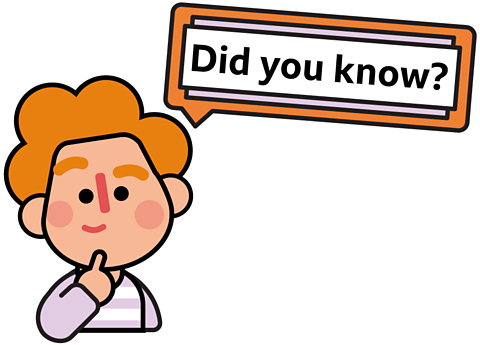
If you went on a walk around your local park or green space, you might see lots of different living things.
You might see a blackbird or a squirrel in a tree, a bee on a flower or a frog in a pond.
We can put these living things into groups depending on the features that they share.

Plants
Plants canāt move by themselves and they produce their own 'food' by using the energy from the Sun.
Most plants have stems, leaves and roots. Some also produce flowers, cones or fruits.
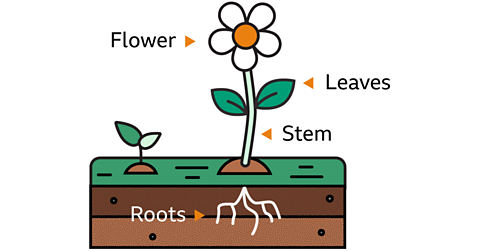
The roots of a plant take up water and nutrients from the soil. They also keep the plant steady and upright.
The stem carries water and nutrients to different parts of the plant.
The leaves use light from the Sun to make food for the plant.
Some plants have flowers too. These are involved in reproduction and produce seeds from which new plants grow.
Animals
Animals can be divided into two groups - vertebrates and invertebrates.
Vertebrates are animals that have a backbone inside their body.
Have a look through the slideshow below to find out about the different types.

Image caption, Fish
Fish have fins and breathe through gills, for example goldfish or cod.
Image caption, Amphibians
Amphibians need moist environments or water to survive, for example frogs and newts.
Image caption, Reptiles
Reptiles are covered in scales, for example tortoises and lizards.
Image caption, Birds
Birds have wings and feathers, for example pigeons and seagulls.
Image caption, Mammals
Mammals have hair and are fed from milk produced by their mothers, for example cats and squirrels.
1 of 5
Invertebrates don't have a backbone.
They either have a soft body, like worms and jellyfish, or a hard outer casing covering their body, like spiders and crabs.
Here are some you might find in your local area.
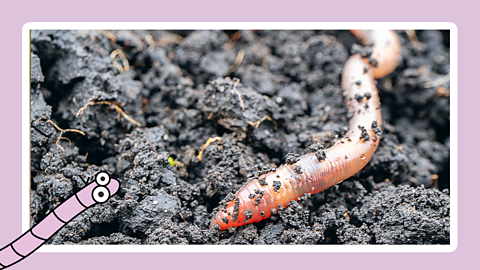
Image caption, Worms
Image caption, Molluscs
Image caption, Spiders
Image caption, Insects
Image caption, Crustaceans
1 of 5
Habitats
The place where an animal or plant lives is called its habitat.
Lots of living things share a habitat together. For example a woodland habitat might be home to oak trees, wildflowers, foxes, bees, squirrels and woodpeckers.
The animals in a habitat depend on each to survive. For example, the squirrels might feed on the acorns from the oak tree and the woodpecker might make its nest in the trunk.
Find out how living things in a habitat are connected together in a food chain.
Animals and plants are suited to the habitat where they live. For example, frogs are amphibians and need water to keep their skin moist and for laying their eggs.
Because of this, frogs are often found in damp and wet environments, like near ponds and pools of water.
Keeping track
Using a tally is a great way to keep a track of the different living things you come across.

By grouping together neat sets of five marks, it makes it much easier to keep track of larger numbers and to add up your total at the end.
Lesson complete!
Well done Regenerator, you've completed this lesson. Now let's see what you can remember.
Scavenger hunt nature walk
Itās time to get outside and put your skills to the test. Take a look around your garden, park or school.
This scavenger hunt activity from has a general list of living things you may see in the wilderness. Good luck!
TWINKL

There's more to learn
Explore more lessons and content from around the “óĻó“«Ć½.
How can we look after our environment?
GREEN CLASSROOM
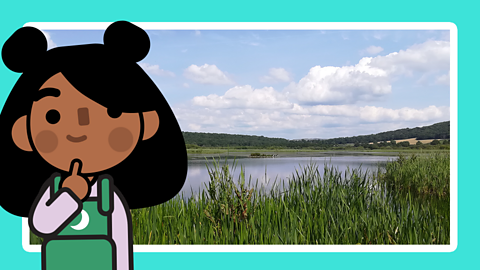
Which pollinators visit my garden?
GREEN CLASSROOM
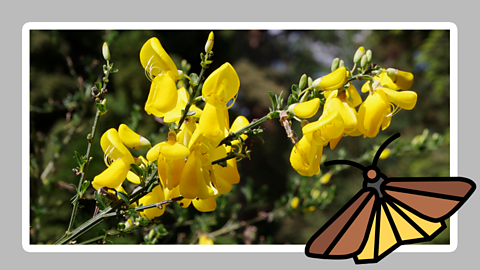
Year 1 - 2 and P2 - P3
GREEN CLASSROOM
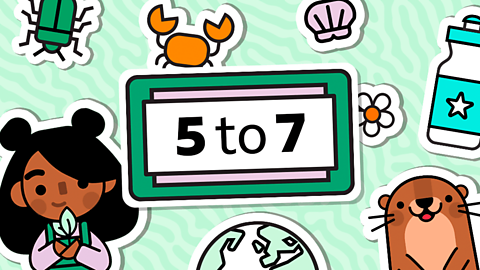
More from The Regenerators
“óĻó“«Ć½ BITESIZE
